Survival knives: how do I choose the best one?
Survival knives come in many different shapes, sizes and materials. We currently have so many brands to choose from, the actual choice could become quite difficult. That is why we will tell you what a real survival knife is, what it needs to be able to do and how you choose the survival knife that will suit you best.
What is a survival knife?
A survival knife is a knife that was designed and made to be used during an emergency situation. In general a survival knife needs to be a reliable and sustainable tool that can be used for various tasks during a survival situation.
The most important features for a good survival knife are:
-
A tough and relatively easy to sharpen blade: In terms of steel a survival knife needs to be tough, to make sure it won't break during the more demanding tasks. It also needs to be easy to sharpen in the field with limited means.
-
A comfortable grip: the handle needs to be comfortable to hold, even for a longer period of time, and should even provide you with enough grip during wet or slippery circumstances.
-
A full-tang construction: a full-tang construction means that the blade moves throughout the entire handle, making the knife stronger and adding more stability.
-
A versatile blade shape: A survival knife needs to be versatile and capable of carrying out a number of tasks such as chopping, cutting and gutting.
-
A solid sheath: A good survival knife comes in a sheath that enables you to safely store the knife.
Based on the information listed above we already made a rough selection on our survival knives page. We are, however, still talking about hundreds of different knives. That is why we will try to help you choose between a couple popular choices and important considerations.
Which type of steel for a survival knife?
One of the first things you need to decide upon is the type of steel. And not even the specific type of steel, but the category. Knife steel can namely be divided into three categories: carbon steel, tool steel and stainless steel. It is important to know that within the three categories there are many hundreds of different types of steel that each have their own qualities. And those types of steel can act completely different due to a difference in heat treatment. We therefore also don't pretend to proclaim the absolute truth, we just give you the broad outlines.
You can also easily sharpen a carbon steel survival knife in the field. You compromise when it comes to sharpness retention, but sharpening is a lot easier.
- Carbon steel
Carbon steel is a type of steel with, you guessed it, a high carbon content. Not surprising, considering the name. Carbon steel is not stainless. Store it while still wet or leave fruit acids to settle and the rust will come creeping in mere hours/days. Salt (water) is also not appreciated. To prevent corrosion a carbon steel blade is often enhanced with a coating. Saves you some time maintaining your knife. You do get something in return for that lack of corrosion resistance. A carbon steel survival knife is namely tough and not prone to break. Perfect for the more demanding tasks without the knife or (part of) the edge breaking off. You can also easily sharpen a carbon steel survival knife in the field. You compromise when it comes to sharpness retention, but sharpening is a lot easier.
For instance: the most common type of carbon steel is 1095 steel.
- Stainless steel
Stainless knife steel is a type of steel with a high carbon content, like carbon steel, but with the addition of chromium. This chromium largely protects the steel from rust. Not completely: it is namely corrosion resistant not stainless. A stainless type of steel is often a little more difficult to sharpen than carbon steel, even though it differs per type. In general a stainless type of steel cannot handle hard blows. We recommend a survival knife with a stainless steel blade if you know you will be spending a lot of time in a very humid/salt environment, and are not able to maintain your knife.
For instance: some types of stainless steel we often see in outdoor/survival knives are: VG10, CoS, Sandvik 12C27, AUS8 and Böhler N690.
- Tool steel
Then there is tool steel. These are the types of steel with a high carbon content and some chromium, but not enough to completely fall into the category of carbon or stainless steel. They combine the best of both worlds. In time they can rust, but not as fast as carbon steel. At the same time they can handle the more demanding tasks and are (often) easy to sharpen.
For instance: a couple more frequently occurring types of tool steel are Sleipner and D2.
The handle of a survival knife
A comfortable grip is an important feature of a survival knife because the knife is used for a longer period of time in various conditions. This is key during a survival situation. The handle, for instance, needs to maintain its grip in circumstances where the handle is wet or slippery. When it rains or in the water, for instance. A comfortable grip ensures that you can easily use the knife and feel confident enough to use the knife whenever you need it, which is important during a survival situation. In addition to the fact that it needs to be comfortable in various circumstances, it also needs to be able to handle its own. There are a number of handle materials that excel at this.
- Micarta
One of the most popular types of handle materials for survival knives is micarta. That's a composite material of linen and synthetic resin. The result is a rock-solid material. Micarta offers enough grip, even in wet circumstances. It can withstand temperature fluctuations and differences in humidity. Micarta is also maintenance-free, wear and tear resistant and it feels great in hand. A great material for almost any knife.
- G10
Another stable material is G10. it is made from fibreglass with synthetic resin. In terms of features it is similar to micarta. In terms of grip, however, micarta is better in wet circumstances.
- Rubber
Rubber is also a common material for handles. Sometimes pure rubber, sometimes a synthetic mix and sometimes as an 'overmould' around a core of a different material. Rubber is, of course, completely insensitive to moisture and depending on the texture applied, it offers enough grip. In many instances rubber is therefore a perfectly stable material. Especially in wet circumstances. If we do have to mention a disadvantage of the material is that rubber cannot handle high heat that well.
Please note: We do not prefer wooden handles for survival knives. Why? It has to do with the stability of wood. Wood can always crack and change shape when the humidity or temperature changes. Of course there are stabilized and laminated types of wood where this plays less of a role. We, however, don't like to take any chances when it comes to a survival situation and like to play it safe with a synthetic material.
Full-tang construction
A full-tang construction is a type of knife where the blade runs throughout the entire handle. The handle is enhanced with scales that are attached to both sides of the steel. A full-tang knife has some advantages over a knife without this construction.
The different advantages of a full-tang construction are as follows:
-
Strength and stability: In general a full-tang knife is stronger and more stable than one without, because the blade runs throughout the handle. As such it is less likely that the steel will break or bend during heavy-duty use.
-
Improved balance: A knife with a full-tang construction is, in general, more balanced than one without. It is the result of the division of the weight: it is even over the entire handle. As such it is easier to use the knife.
-
Maintenance: Because a full-tang knife is often enhanced with removable scales they are easier to clean as well. Replacing a scale is also easier for a full-tang knife than for knives without a full-tang construction.
In general a full-tang knife is considered to be a more reliable and more sustainable tool than knives without this construction. As such a full-tang construction is a good choice for different tasks, but also during a survival situation.
Versatile blade shapes
A versatile blade shape is an important feature for a survival knife because the knife is used for a wide variety of tasks. Most shapes are suited for different tasks, some, however, are a little better at carrying out specific tasks. The most common shapes for good survival knives are:
-
Drop point: For a drop point blade the tip runs down with a small arc. This simple shape is the most versatile and excels at cutting, gutting and general use.
-
Clip point: A clip point blade bends down and up at the tip of the blade, creating the well-known 'clip'. This shape excels at gutting game.
-
Tanto: A tanto shape has a triangular or hammer-shaped end that is rock-solid. Because of this strength a tanto blade can pierce even the hardest materials.
-
Spear point: A spear point blade has a strong curve towards the tip. As such the edge and the spine move towards each other, creating a strong tip. This type of shape, like the tanto, excels at piercing objects. However, because it is also enhanced with a substantial belly, it is also amazing to use.
In general a versatile blade shape enables you to use a knife for a variety of tasks during a survival situation, making it a valuable tool to keep on hand.
A solid sheath
Owning a sheath for a survival knife is key because it not only enables you to keep your knife safe, but also to easily take it with you. Some advantages of owning a sheath for a survival knife are:
-
Protection: A sheath can protect a knife from damage or wear when it is not being used. It is also prevents accidents because the sharp edge is covered and protected when the knife is not being used.
-
Ease of use: A sheath enables you to easily take the knife with you, whether you go hiking, camping, or plan to travel. This is key during a survival situation, during which you would prefer to always keep your knife close.
-
Access: With a sheath you make sure you always keep your knife close. As such you never have to look for it but will always have it around when you need it. This is very important during survival situations, during which time is often of the essence.
So much information, but which survival knife will suit me best?
Based on the above mentioned considerations you will probably already come a long way in your search. To help you out even more we wrote a couple specific pages. With these pages we try to make the massive range a little more organized.
Budget survival knives
When choosing a budget survival knife you show that survival gear doesn't always have to be expensive. In addition, it can be very useful to own a knife you don't have to be too careful with. If you make a mistake and somehow 'damage' the blade, it isn't as problematic as with a premium survival knife.

Compact survival knives
A compact survival knife is great as a back-up knife or during hikes. It won't take up as much room and is often lighter in comparison to a large survival knife. At the same time you also really shouldn't underestimate a compact survival knife. With the right techniques you can do a lot with a small knife in a survival situation. After all, it is not about the size, it is about what you do with it...
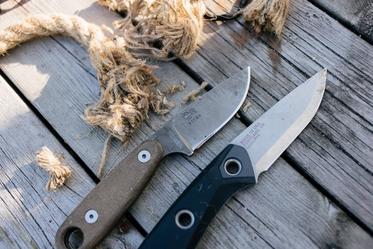
Large survival knives
Large survival knives are great for the more demanding tasks. Think of chopping wood, making a fire or building a shelter. Even though you can often do a lot more with a small knife than you might initially think, there are some situations during which you will actually need a large survival knife. Like when cutting large pieces of wood or removing dense vegetation. That is when you could really use the extra couple centimetres.

Lightweight survival knives
Lightweight survival knives are great for hikers and as a back-up next to your primary knife. When you enter the mountains with your backpack, you want to carry as little weighs as possible. That's when you think carefully about the gear you take with you. A large and heavy survival knife will not be practical at all. That is when light-weight survival knives are great!

Premium survival knives
A premium survival knife is truly a remarkable tool. Because of the excellent finish, the craftsmanship, the exotic materials or simply the design. Within the premium survival knives range there are many differences to be found. From compact knives you can almost carry as a neck knife to large machetes that will help you clear your path in the jungle. These knives are made to be used, but will always look amazing in a display case.
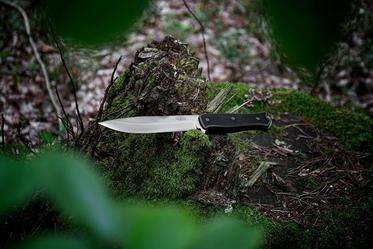
Carbon steel survival knives
Carbon steel is a popular choice for survival knives because it is strong and easy to sharpen. It can maintain a sharp edge for a long time and can handle its own. It is also relatively easy to sharpen, even if it has become very blunt. It does, however, come with a disadvantage. It is namely very sensitive to rust if not properly taken care off. Because of the many positive qualities, however, people love to take this for granted.
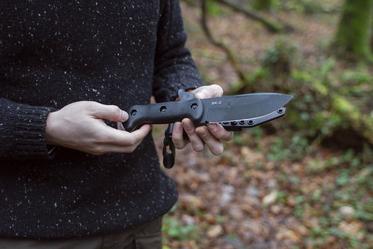
Conclusion
As you probably realized by now finding the best survival knife is not that easy. We hope this topic will help you know what to look for when purchasing a survival knife. Below you can find all our survival knives.

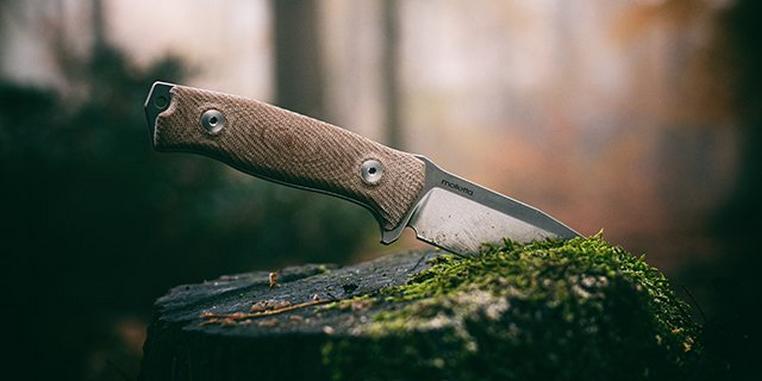
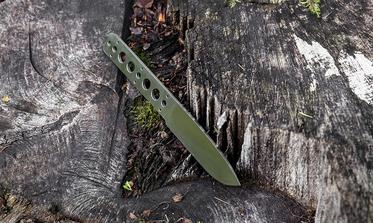

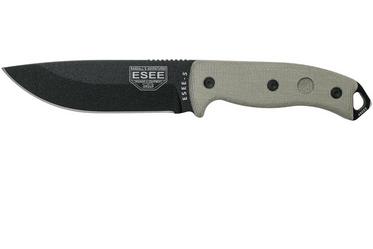
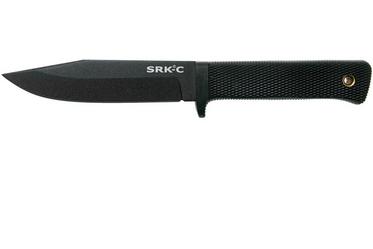
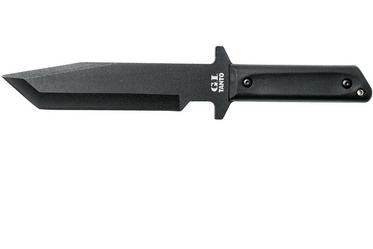
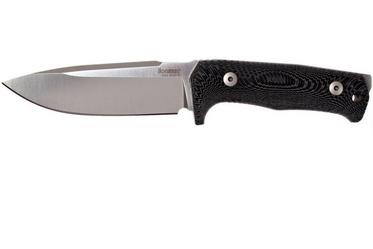






?%24center=center&%24poi=poi&%24product-image%24=&fmt=auto&h=500&poi=%7B%24this.metadata.pointOfInterest.x%7D%2C%7B%24this.metadata.pointOfInterest.y%7D%2C%7B%24this.metadata.pointOfInterest.w%7D%2C%7B%24this.metadata.pointOfInterest.h%7D&scaleFit=%7B%28%24this.metadata.pointOfInterest%29%3F%24poi%3A%24center%7D&sm=c&w=1208)
